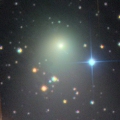
|
It became much brighter than expected. Now it is so bright as 8.7 mag (Aug. 23, Willian Souza). It keeps bright as 8-9 mag until autumn. In the Southern Hemisphere, it will keep observable in good condition for a long time until 2014 summer when the comet fades out. It will never be observable again in the Northern Hemisphere.
Date(TT) R.A. (2000) Decl. Delta r Elong. m1 Best Time(A, h)
Sept. 7 8 41.85 -14 59.1 2.097 1.487 40 8.7 4:47 (273, 23)
Sept.14 9 0.65 -19 51.4 2.082 1.510 42 8.8 4:37 (277, 25)
|
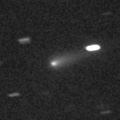
|
Appearing in the morning sky. Now it is 12.4 mag (Sept. 7, Jakub Cerny). It is expected to be a great comet in 2013 autumn when the comet approaches to the sun down to only 0.01 A.U. It keeps visible with naked eyes from November to January, and can be extremely bright as Venus or more at the highlight. But recently, it is fainter than originally expected by 2 mag. The condition is excellent in the Northern Hemisphere. It keeps observable almost all through the period of brightening, at the highlight, and of fading. The condition is not good in the Southern Hemisphere. It is not observable at all the latter part of the highlight, and it keeps low all through the period.
Date(TT) R.A. (2000) Decl. Delta r Elong. m1 Best Time(A, h)
Sept. 7 8 51.10 21 25.2 2.818 2.078 35 10.9 4:47 (244, -1)
Sept.14 9 2.55 20 29.9 2.632 1.958 39 10.5 4:37 (244, 1)
|

|
It approached to the sun down to 0.73 A.U. on Mar. 24, and brightened up to 4.7 mag (Mar. 11, Michael Mattiazzo). Now it is fading. But it is still bright as 10.8 mag (Sept. 6, Sandor Szabo). In the Northern Hemisphere, it keeps observable in good condition while fading gradually. In the Southern Hemisphere, it will never be observable again.
Date(TT) R.A. (2000) Decl. Delta r Elong. m1 Best Time(A, h)
Sept. 7 19 3.86 65 20.5 2.478 2.778 96 11.4 19:56 (180,-10)
Sept.14 18 51.89 63 19.8 2.578 2.865 96 11.6 19:17 (180, -8)
|

|
New bright comet discovered in the extremely low sky at dawn. Now it is 11.8 mag (Aug. 30, Ken-ichi Kadota). It keeps 11-13 mag until autumn, but it keeps locating extremely low in the morning sky. It is not observable until November in the Southern Hemisphere. Juan Jose Gonzalez reported it is so bright as 8.8 mag on Aug. 18.
Date(TT) R.A. (2000) Decl. Delta r Elong. m1 Best Time(A, h)
Sept. 7 9 52.32 20 34.8 2.109 1.237 22 11.5 4:47 (253,-12)
Sept.14 10 11.80 16 27.1 2.130 1.263 22 11.7 4:37 (257,-10)
|

|
The condition is worst and the comet will be hardly observable in this apparition. In the Northern Hemisphere, it will be observable in autumn when the comet will be fainter than 16 mag.
Date(TT) R.A. (2000) Decl. Delta r Elong. m1 Best Time(A, h)
Sept. 7 10 14.66 16 57.6 2.253 1.313 15 12.2 4:47 (259,-14)
Sept.14 10 36.84 15 20.4 2.294 1.366 17 12.7 4:37 (261,-14)
|
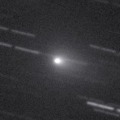
|
New bright comet discovered on Sept. 7 at 14.4 mag. Now it is 12.2 mag (Sept. 11, Chris Wyatt). It will pass only 0.4 A.U. from the earth in November and December, and will brighten up to 6 mag. In the Northern Hemisphere, it keeps observable in excellent condition for a long time until 2014 autumn when the comet will fade out. In the Southern Hemisphere, it will not be observable in December and January. But it keeps observable in good condition until late November when the comet will brighten up to 7 mag.
Date(TT) R.A. (2000) Decl. Delta r Elong. m1 Best Time(A, h)
Sept. 7 5 57.12 -6 43.4 1.976 2.010 77 13.0 4:47 (233, 50)
Sept.14 6 7.75 -5 58.8 1.812 1.920 80 12.6 4:37 (230, 50)
|
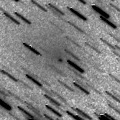
|
Brightening very rapidly. It has already brightened up to 12.2 mag (Sept. 7, Jakub Cerny). It will pass the perihelion on Nov. 21, and will brighten up to 7 mag. In the Northern Hemisphere, it keeps observable in excellent condition while the comet is brightening rapidly in the morning sky. In the Southern Hemisphere, it is observable only until early October.
Date(TT) R.A. (2000) Decl. Delta r Elong. m1 Best Time(A, h)
Sept. 7 4 22.45 35 24.9 1.032 1.498 94 14.3 4:47 (187, 19)
Sept.14 4 51.09 37 55.6 0.892 1.402 94 13.2 4:37 (189, 16)
|

|
Now it is 11.7 mag (Sept. 6, Sandor Szabo). It keeps bright at 13-14 mag for a long time until 2014. It keeps observable for a long time in the Northern Hemisphere. It locates somewhat low in the Southern Hemisphere.
Date(TT) R.A. (2000) Decl. Delta r Elong. m1 Best Time(A, h)
Sept. 7 19 31.41 23 19.6 5.373 5.951 120 13.3 20:24 (180, 32)
Sept.14 19 27.00 21 51.6 5.447 5.957 116 13.3 19:53 (180, 33)
|
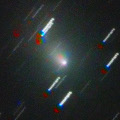
|
It brightened up to 9-10 mag in 2013 spring. Now it is fading. It has already faded down to 14.6 mag (Aug. 28, Hidetaka Sato). In the Southern Hemisphere, it keeps observable for a long time until the comet fades out, although it keeps locating low. It will never be observable again in the Northern Hemisphere.
Date(TT) R.A. (2000) Decl. Delta r Elong. m1 Best Time(A, h)
Sept. 7 10 6.36 -44 22.6 2.687 2.215 52 13.5 4:47 (310, 21)
Sept.14 10 27.82 -46 57.3 2.754 2.280 52 13.7 4:37 (313, 22)
|
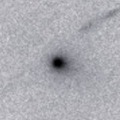
|
Brightening very rapidly. It has already brightened up to 14.2 mag (Sept. 5, Alan Hale). It is expected to reach up to 10 mag from autumn to winter. In the Northern Hemipshere, it keeps observable in excellent condition until the comet fades out. In the Southern Hemisphere, it keeps observable in good condition within 2013, but it will not be observable in 2014.
Date(TT) R.A. (2000) Decl. Delta r Elong. m1 Best Time(A, h)
Sept. 7 22 27.44 -12 37.4 0.919 1.918 169 14.0 23:20 (180, 67)
Sept.14 22 19.13 -11 15.9 0.898 1.879 161 13.5 22:44 (180, 66)
|

|
Big asteroid discovered in 1906. It suddenly showed the cometary activity on Dec. 11, 2010, probably due to an impact of a small object. It has already turned to be stellar.
Date(TT) R.A. (2000) Decl. Delta r Elong. m1 Best Time(A, h)
Sept. 7 0 56.02 -16 0.6 2.118 3.036 150 13.6 1:53 (180, 71)
Sept.14 0 51.07 -16 38.3 2.102 3.047 155 13.5 1:20 (180, 72)
|

|
It brightened up to 11-12 mag in 2012. Now it is bright as 13.7 mag (July 24, Taras Prystavski). It is already unobservable in the Northern Hemisphere. It will be unobservable in late September also in the Southern Hemisphere. However, it will be observable again at 14 mag after December.
Date(TT) R.A. (2000) Decl. Delta r Elong. m1 Best Time(A, h)
Sept. 7 13 12.60 -10 35.6 7.163 6.381 36 13.7 19:09 ( 89, 18)
Sept.14 13 13.81 -10 48.6 7.261 6.411 30 13.8 19:14 ( 85, 12)
|
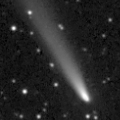
|
It approached to the sun down to 0.8 a.u. on Aug. 6, and brightened very rapidly. Now it is so bright as 13.2 mag (Aug. 27, Taras Prystavski). In the Southern Hemisphere, it keeps observable at 13 mag in good condition in the evening sky until September. It is not observable in the Northern Hemisphere.
Date(TT) R.A. (2000) Decl. Delta r Elong. m1 Best Time(A, h)
Sept. 7 14 40.17 -34 29.6 0.636 0.942 65 13.9 19:09 ( 74, 47)
Sept.14 15 37.49 -39 48.9 0.622 1.002 71 14.5 19:14 ( 68, 53)
|
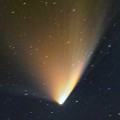
|
It passed the perihelion on Mar. 10, and brightened up to 0-1 mag. Now it is fading. It has already faded down to 13.2 mag (Sept. 6, Sandor Szabo). It is observable in good condition in the Northern Hemisphere. It is not observable in the Southern Hemisphere.
Date(TT) R.A. (2000) Decl. Delta r Elong. m1 Best Time(A, h)
Sept. 7 15 11.03 38 34.7 3.547 3.244 64 13.9 19:09 (146, 5)
Sept.14 15 17.51 36 43.1 3.681 3.333 62 14.2 19:14 (140, 3)
|

|
Now it is bright as 13.0 mag (Aug. 28, Taras Prystavski). It is already unobservable in the Northern Hemisphere. It keeps observable until early October in the Southern Hemisphere.
Date(TT) R.A. (2000) Decl. Delta r Elong. m1 Best Time(A, h)
Sept. 7 14 0.72 -21 25.8 6.771 6.197 51 14.1 19:09 ( 86, 33)
Sept.14 14 5.22 -21 42.3 6.851 6.196 46 14.1 19:14 ( 82, 28)
|

|
Now it is 14.0 mag and visible visually (Sept. 6, Sandor Szabo). It is expected to brighten up to 5-6 mag in 2014 autumn. In the Northern Hemisphere, it keeps observable in good condition for a long time, although it will be unobservable temporarily in late November. In the Southern Hemisphere, it will be unobservable in late September, then it keeps unobservable until 2014 February.
Date(TT) R.A. (2000) Decl. Delta r Elong. m1 Best Time(A, h)
Sept. 7 15 35.83 16 12.3 4.976 4.685 67 14.2 19:09 (137, 26)
Sept.14 15 35.60 15 29.4 4.999 4.615 62 14.1 19:14 (129, 22)
|

|
Now it is 14.5 mag (June 11, Sandor Szabo). It keeps 13 mag and observable in good condition in the Northern Hemisphere for a long time from 2013 to 2014. In the Southern Hemisphere, it is not observable until 2014 autumn.
Date(TT) R.A. (2000) Decl. Delta r Elong. m1 Best Time(A, h)
Sept. 7 10 7.31 54 49.6 4.154 3.588 49 14.5 4:47 (222,-30)
Sept.14 10 15.47 55 52.8 4.063 3.571 54 14.4 4:37 (220,-29)
|
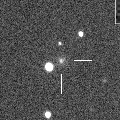
|
It is expected to brighten up to 11 mag and become observable in excellent condition in 2014 spring. In the Northern Hemisphere, it keeps extremely low in August and September. But it will be getting higher gradually in the morning sky after October. In the Southern Hemisphere, it is not observable until 2014 February.
Date(TT) R.A. (2000) Decl. Delta r Elong. m1 Best Time(A, h)
Sept. 7 11 25.75 31 0.4 3.547 2.672 25 15.0 19:09 (111,-26)
Sept.14 11 40.10 30 8.2 3.465 2.607 26 14.9 19:14 (108,-29)
|

|
It brightened up to 14.5 mag in July (July 16, M. Brusa, L. Sempio). Now it is fading. In the Southern Hemisphere, it keeps observable for a long time until the comet fades out. It will be unobservable in October in the Northern Hemisphere.
Date(TT) R.A. (2000) Decl. Delta r Elong. m1 Best Time(A, h)
Sept. 7 18 20.55 -31 10.9 1.763 2.309 109 14.9 19:14 (180, 86)
Sept.14 18 9.94 -33 47.2 1.904 2.313 100 15.0 19:14 ( 95, 82)
|
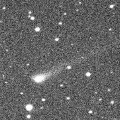
|
Now it is 14.3 mag (July 8, Chris Wyatt). It keeps bright as 13-14 mag for a long time from 2013 to 2014. In the Northern Hemisphere, it will be low in late September. In the Southern Hemisphere, it keeps observable until late October.
Date(TT) R.A. (2000) Decl. Delta r Elong. m1 Best Time(A, h)
Sept. 7 14 51.37 -16 46.8 3.574 3.210 61 14.9 19:09 ( 98, 41)
Sept.14 14 59.51 -17 32.1 3.646 3.200 56 14.9 19:14 ( 94, 37)
|

|
It brightened up to 12 mag in 2012. It is bright as 13.3 mag still now (July 1, Hidetaka Sato). It keeps 13-14 mag until autumn. It locates somewhat low in the Northern Hemisphere.
Date(TT) R.A. (2000) Decl. Delta r Elong. m1 Best Time(A, h)
Sept. 7 19 14.73 -36 21.9 2.478 3.108 120 14.9 20:08 ( 0, 89)
Sept.14 19 16.70 -36 10.2 2.575 3.121 113 15.0 19:43 ( 0, 89)
|
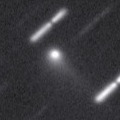
|
Brightened rapidly. Now it is so bright as 12.3 mag and visible visually (Aug. 28, Marco Goiato). It keeps observable in excellent condition until autumn.
Date(TT) R.A. (2000) Decl. Delta r Elong. m1 Best Time(A, h)
Sept. 7 21 11.87 3 53.1 1.217 2.153 150 15.1 22:05 (180, 51)
Sept.14 21 10.51 4 10.7 1.256 2.158 144 15.1 21:36 (180, 51)
|
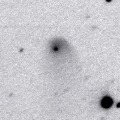
|
Now it is 15.5 mag (Aug. 25, Ken-ichi Kadota). It keeps 15 mag and observable in good condition in 2013. It locates somewhat low in the Northern Hemisphere.
Date(TT) R.A. (2000) Decl. Delta r Elong. m1 Best Time(A, h)
Sept. 7 4 11.35 -24 41.0 6.707 7.022 104 15.2 4:47 (204, 79)
Sept.14 4 9.84 -24 56.8 6.659 7.052 109 15.2 4:37 (181, 80)
|
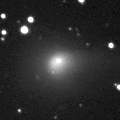
|
Fading slowly. Now it is 14.5 mag (Sept. 7, Sandor Szabo). It keeps observable in good condition until the comet will be fainter than 18 mag in December.
Date(TT) R.A. (2000) Decl. Delta r Elong. m1 Best Time(A, h)
Sept. 7 1 16.21 4 53.4 1.913 2.797 144 15.4 2:13 (180, 50)
Sept.14 1 11.82 3 32.6 1.936 2.868 153 15.5 1:41 (180, 51)
|
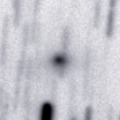
|
It brightened up to 2 mag by unusual major outburst in 2007. It will return in 2014. It will be 14 mag at best by normal prediction. But actually, it is brighter than predicted. It has already brightened up to 15.6 mag (Aug. 3, Taras Prystavski).
Date(TT) R.A. (2000) Decl. Delta r Elong. m1 Best Time(A, h)
Sept. 7 17 10.62 -38 6.0 2.251 2.552 95 16.0 19:09 ( 72, 77)
Sept.14 17 18.45 -37 10.8 2.309 2.524 90 15.9 19:14 ( 77, 72)
|
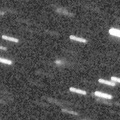
|
First return of a new periodic comet discovered in 1998. It brightened up to 10 mag at the discovery. Now it is 15.0 mag (Sept. 5, Michael Jager). In the Northern Hemisphere, it keeps observable in excellent condition from autumn to spring. A bit fainter than originally expected, but it will brighten up to 12 mag. It locates somewhat low in the Southern Hemisphere.
Date(TT) R.A. (2000) Decl. Delta r Elong. m1 Best Time(A, h)
Sept. 7 5 33.90 40 10.2 2.732 2.744 80 16.1 4:47 (200, 11)
Sept.14 5 45.44 40 29.7 2.615 2.707 84 15.9 4:37 (199, 11)
|

|
Brightening extremely rapidly. Now it is bright as 15.6 mag (Aug. 11, Toshiyuki Takahashi). It has already passed the perihelion, but it may keep 16 mag some more time.
Date(TT) R.A. (2000) Decl. Delta r Elong. m1 Best Time(A, h)
Sept. 7 16 54.30 -21 42.7 1.368 1.705 90 16.0 19:09 (122, 68)
Sept.14 17 12.02 -22 59.1 1.433 1.719 87 16.1 19:14 (114, 66)
|

|
Now it is 16.8 mag (July 24, Hidetaka Sato). It is expected to brighten up to 7.5 mag and to be observable in excellent condition from summer to autumn in 2014 in the Southern Hemisphere. The condition is bad in the Northern Hemisphere. It will pass extremely close to Mars in 2014 October.
Date(TT) R.A. (2000) Decl. Delta r Elong. m1 Best Time(A, h)
Sept. 7 5 37.68 -21 47.8 5.077 5.075 84 16.3 4:47 (247, 63)
Sept.14 5 37.50 -23 3.3 4.924 5.010 89 16.2 4:37 (244, 67)
|

|
Now it is 16.9 mag (Sept. 4, D. buczynski). It will be observable at 16 mag in good condition in summer and autumn.
Date(TT) R.A. (2000) Decl. Delta r Elong. m1 Best Time(A, h)
Sept. 7 0 30.69 20 17.3 1.343 2.249 145 16.4 1:27 (180, 35)
Sept.14 0 28.11 18 59.3 1.324 2.267 153 16.4 0:57 (180, 36)
|

|
It was observed at 15-16 mag in 2012. Now it is fading slowly. It has already faded down to 16.5 mag (Aug. 8, S. Shurpakov). It will be fainter than 18 mag at the end of 2013. It locates low in the Southern Hemisphere.
Date(TT) R.A. (2000) Decl. Delta r Elong. m1 Best Time(A, h)
Sept. 7 1 43.01 34 58.3 3.825 4.469 124 16.6 2:40 (180, 20)
Sept.14 1 34.60 33 52.9 3.769 4.506 132 16.6 2:04 (180, 21)
|

|
It brightened up to 9.0 mag in 2012 autumn (Nov. 4, Juan Jose Gonzalez). However, it faded out unexpectedly around the perihelion passage. Now it is fainter than originally predicted by 4-5 mag. It has already faded down to 17.6 mag (Aug. 31, A. Maury, J. F Soulier, T. Noel, J. G. Bosch). In the Southern Hemisphere, it keeps observable in good condition while fading slowly after this. In the Northern Hemisphere, it will not be observable after this.
Date(TT) R.A. (2000) Decl. Delta r Elong. m1 Best Time(A, h)
Sept. 7 4 5.64 -50 40.6 3.012 3.395 103 16.7 4:47 (352, 74)
Sept.14 4 3.10 -51 34.2 3.047 3.458 105 16.8 4:31 ( 0, 73)
|
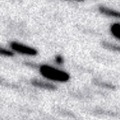
|
It reaches up to 12 mag in 2014 spring. But the condition in this apparition is bad. It locates low around the brightest days. Now it is 15.7 mag (Aug. 26, J. Aledo). It keeps observable in good condition until winter when the comet will brighten up to 15-16 mag.
Date(TT) R.A. (2000) Decl. Delta r Elong. m1 Best Time(A, h)
Sept. 7 19 8.89 -11 1.2 2.214 2.880 122 16.9 20:02 (180, 66)
Sept.14 19 8.56 -11 29.4 2.256 2.838 115 16.8 19:35 (180, 66)
|
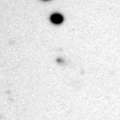
|
Now it is 16.4 mag (Aug. 19, A. Klotz, F. Kugel, J. Nicolas, J. Caron)). It tends to be brightest 4 months after the perihelion passage. It will reach up to 15.5 mag from autumn to winter, and will be observable in excellent condition.
Date(TT) R.A. (2000) Decl. Delta r Elong. m1 Best Time(A, h)
Sept. 7 5 30.89 16 20.8 1.748 1.884 81 17.0 4:47 (209, 33)
Sept.14 5 43.86 16 26.2 1.698 1.898 85 16.9 4:37 (208, 34)
|

|
It brightened up to 12-13 mag from autumn to winter in 2012. Now it is 15.3 mag (Aug. 17, Hidetaka Sato). It will be fading after this. But it keeps observable for a long time until the end of 2013 when the comet becomes fainter than 18 mag.
Date(TT) R.A. (2000) Decl. Delta r Elong. m1 Best Time(A, h)
Sept. 7 5 58.61 10 38.7 4.224 4.083 75 16.9 4:47 (219, 35)
Sept.14 6 2.90 9 47.4 4.164 4.123 80 17.0 4:37 (217, 38)
|

|
Now it is 18.0 mag (Sept. 1, J. Aledo). It keeps 17 mag for a long time from 2013 summer to early 2015.
Date(TT) R.A. (2000) Decl. Delta r Elong. m1 Best Time(A, h)
Sept. 7 2 15.50 18 12.8 2.514 3.217 126 17.1 3:12 (180, 37)
Sept.14 2 15.13 18 11.8 2.430 3.205 133 17.0 2:44 (180, 37)
|
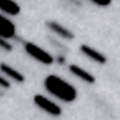
|
Now it is 17.3 mag (Aug. 5, A. Waszczak). It was observed at 18 mag in 2012. It will be observable at 17 mag in excellent condition in 2013.
Date(TT) R.A. (2000) Decl. Delta r Elong. m1 Best Time(A, h)
Sept. 7 23 50.73 5 14.3 3.413 4.388 163 17.1 0:48 (180, 50)
Sept.14 23 42.11 3 9.0 3.397 4.396 172 17.1 0:12 (180, 52)
|
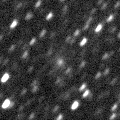
|
Now it is 17.2 mag (Aug. 1, M. Casali, A. Coffano. W. Marinello, M. Micheli, G. Pizzetti). It will be fading after this, and will be fainter than 18 mag in late October.
Date(TT) R.A. (2000) Decl. Delta r Elong. m1 Best Time(A, h)
Sept. 7 18 28.09 -6 43.4 2.580 3.100 111 17.2 19:22 (180, 62)
Sept.14 18 31.96 -7 3.4 2.682 3.119 106 17.3 19:14 (172, 62)
|
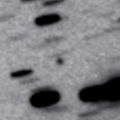
|
Now it is 17.8 mag (July 31, W. Hasubick). It keeps observable at 18 mag for a long time from 2013 to 2016. It keeps locating high in the Northern Hemisphere. It keeps locating very low in the Southern Hemipshere.
Date(TT) R.A. (2000) Decl. Delta r Elong. m1 Best Time(A, h)
Sept. 7 18 45.42 26 11.0 6.463 6.872 109 17.4 19:39 (180, 29)
Sept.14 18 42.13 25 52.0 6.525 6.856 105 17.4 19:14 (178, 29)
|

|
First return of a new periodic comet discovered in 2005. It was expected to be observable at 17 mag for a long time from 2013 to 2014. However, it has not been recovered yet. Actually, it is much fainter than predicted, fainter than 20 mag (Aug. 6, Jean-Francois Soulier).
Date(TT) R.A. (2000) Decl. Delta r Elong. m1 Best Time(A, h)
Sept. 7 16 56.00 -16 47.4 3.010 3.178 90 17.4 19:09 (131, 65)
Sept.14 17 1.79 -17 14.9 3.102 3.175 84 17.5 19:14 (120, 61)
|

|
Now it is 17.6 mag (Aug. 9, K. Hills). It keeps 17 mag for a long time from 2012 to 2013, and will be observable in good condition in the Southern Hemisphere. It is not observable at all in the Northern Hemisphere.
Date(TT) R.A. (2000) Decl. Delta r Elong. m1 Best Time(A, h)
Sept. 7 22 41.44 -77 12.2 4.701 5.117 108 17.5 23:32 ( 0, 48)
Sept.14 22 8.13 -76 23.6 4.761 5.135 106 17.5 22:32 ( 0, 49)
|
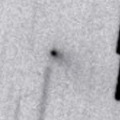
|
Now it is 17.5 mag (Aug. 16, Michael Jager). It will brighten up to 17 mag and will be observable in good condition from summer to autumn.
Date(TT) R.A. (2000) Decl. Delta r Elong. m1 Best Time(A, h)
Sept. 7 0 22.51 21 32.6 1.051 1.969 146 17.6 1:19 (180, 33)
Sept.14 0 14.11 23 46.2 1.033 1.971 150 17.5 0:44 (180, 31)
|

|
Now it is 17.8 mag (Sept. 1, Catalina Sky Survey). It will be observable at 17 mag in excellent condition from autumn to winter.
Date(TT) R.A. (2000) Decl. Delta r Elong. m1 Best Time(A, h)
Sept. 7 3 4.82 21 29.5 2.102 2.682 114 17.6 4:01 (180, 33)
Sept.14 3 8.15 21 38.6 2.015 2.670 120 17.5 3:37 (180, 33)
|
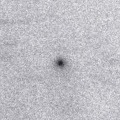
|
Now it is 17.1 mag (July 12, Hidetaka Sato). In the Southern Hemisphere, it keeps observable in good condition for a long time while fading gradually. In the Northern Hemisphere, it keeps extremely low.
Date(TT) R.A. (2000) Decl. Delta r Elong. m1 Best Time(A, h)
Sept. 7 5 50.90 -42 55.0 5.057 5.077 85 17.6 4:47 (298, 66)
Sept.14 5 52.11 -43 24.9 5.049 5.113 87 17.6 4:37 (301, 68)
|

|
Now it is 17.7 mag (July 20, A. Novichonok, T. Prystavski). It will brighten up to 14 mag around the perihelion passage in 2019. In 2013, it will be observable in good condition at 17.5 mag from summer to winter. It locates low in the Southern Hemisphere.
Date(TT) R.A. (2000) Decl. Delta r Elong. m1 Best Time(A, h)
Sept. 7 3 11.11 26 31.2 13.618 14.020 111 17.6 4:07 (180, 28)
Sept.14 3 10.33 26 40.1 13.485 13.991 118 17.6 3:39 (180, 28)
|
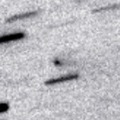
|
Now it is 18.2 mag (Aug. 14, V. Gerke, S. Plaksa). It will brighten up to 16.5 mag and will be observable in good condition from autumn to winter.
Date(TT) R.A. (2000) Decl. Delta r Elong. m1 Best Time(A, h)
Sept. 7 3 4.22 18 9.3 1.656 2.280 115 17.9 4:00 (180, 37)
Sept.14 3 9.61 17 44.8 1.571 2.263 121 17.7 3:38 (180, 37)
|
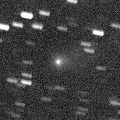
|
It brightened up to 15.5 mag in 2012 summer. Although it has already passed the perihelion, it tends to become brightest after the perihelion passage. Now it is 17.1 mag (Aug. 9, Catalina Sky Survey).
Date(TT) R.A. (2000) Decl. Delta r Elong. m1 Best Time(A, h)
Sept. 7 22 10.37 -23 28.3 2.830 3.786 158 17.8 23:03 (180, 78)
Sept.14 22 6.60 -23 44.0 2.887 3.804 151 17.9 22:32 (180, 79)
|

|
First return of a new periodic comet discovered in 1998. Now it is 17.5 mag (Aug. 31, Hidetaka Sato). It is fainter than originally expected by 2 mag. It was expected to be observable at 15.5 mag in good condition from 2013 autumn to early 2014. But actually, it will be 17 mag at best.
Date(TT) R.A. (2000) Decl. Delta r Elong. m1 Best Time(A, h)
Sept. 7 2 13.92 -23 17.3 2.042 2.807 130 18.0 3:10 (180, 78)
Sept.14 2 13.88 -24 6.2 1.980 2.783 134 17.9 2:43 (180, 79)
|
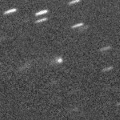
|
Now it is 18.1 mag (Aug. 9, Catalina Sky Survey). It has been observed at 17 mag for a long time from 2009 to 2012. It is also observable at 18 mag in good condition in 2013.
Date(TT) R.A. (2000) Decl. Delta r Elong. m1 Best Time(A, h)
Sept. 7 21 35.03 5 55.1 8.483 9.406 155 17.9 22:28 (180, 49)
Sept.14 21 31.04 5 27.6 8.547 9.428 149 17.9 21:56 (180, 50)
|

|
Now it is 18.1 mag (Aug. 25, G. Hug). It keeps observable at 17.5 mag in good condition from autumn to winter.
Date(TT) R.A. (2000) Decl. Delta r Elong. m1 Best Time(A, h)
Sept. 7 6 3.47 16 6.4 2.003 1.973 73 18.0 4:47 (217, 30)
Sept.14 6 16.73 16 14.0 1.948 1.985 77 17.9 4:37 (216, 30)
|
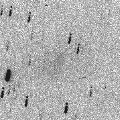
|
It will approach to the Sun down to 0.9 A.U., and to the Earth down to 0.4 A.U. in September. So it was expected to brighten up to 11-12 mag. However, it looked extremely diffuse on July 12 by Michael Jager. So the comet can be already disintegrated. No observations have been reported after that. In the Northern Hemisphere, it keeps observable in good condition until mid September. In the Southern Hemisphre, it will getting higher after August, and it keeps observable in good condition after that.
Date(TT) R.A. (2000) Decl. Delta r Elong. m1 Best Time(A, h)
Sept. 7 15 26.56 -10 18.3 0.421 0.934 67 18.3 19:09 (112, 45)
Sept.14 15 53.54 -28 1.9 0.401 0.955 71 18.5 19:14 ( 87, 53)
|
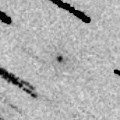
|
Although it was expected to be bright as 16 mag, actually it was so faint as 18.5 mag, fainter than expected by 2-3 mag (Aug. 15, Michael Jager). It will be observable in good condition from summer to autumn, however, it will be only 18-19 mag at best.
Date(TT) R.A. (2000) Decl. Delta r Elong. m1 Best Time(A, h)
Sept. 7 4 26.28 23 57.2 0.970 1.467 95 18.6 4:47 (189, 30)
Sept.14 4 40.51 24 26.9 0.953 1.492 99 18.6 4:37 (188, 30)
|
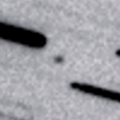
|
It was expected to brighten up to 15 mag in 2013 summer. But actually, it is so faint as 19.5 mag, fainter than expected by 4 mag (July 2, J. F. Soulier).
Date(TT) R.A. (2000) Decl. Delta r Elong. m1 Best Time(A, h)
Sept. 7 18 5.82 -6 50.6 1.652 2.165 106 20.0 19:09 (175, 62)
Sept.14 17 51.93 -9 29.1 1.831 2.188 96 20.3 19:14 (150, 62)
|
|
![]()
 C/2013 R1 ( Lovejoy )
C/2013 R1 ( Lovejoy ) 2P/Encke
2P/Encke C/2010 S1 ( LINEAR )
C/2010 S1 ( LINEAR ) C/2012 L2 ( LINEAR )
C/2012 L2 ( LINEAR ) 154P/Brewington
154P/Brewington (596) Scheila
(596) Scheila C/2006 S3 ( LONEOS )
C/2006 S3 ( LONEOS ) P/2013 CU129 ( PanSTARRS )
P/2013 CU129 ( PanSTARRS ) C/2011 L4 ( PanSTARRS )
C/2011 L4 ( PanSTARRS ) 29P/Schwassmann-Wachmann 1
29P/Schwassmann-Wachmann 1 C/2012 K1 ( PanSTARRS )
C/2012 K1 ( PanSTARRS ) C/2011 J2 ( LINEAR )
C/2011 J2 ( LINEAR ) C/2012 X1 ( LINEAR )
C/2012 X1 ( LINEAR ) C/2012 S3 ( PanSTARRS )
C/2012 S3 ( PanSTARRS ) 117P/Helin-Roman-Alu 1
117P/Helin-Roman-Alu 1 246P/2010 V2 ( NEAT )
246P/2010 V2 ( NEAT ) P/2013 J2 ( McNaught )
P/2013 J2 ( McNaught ) C/2009 F4 ( McNaught )
C/2009 F4 ( McNaught ) C/2013 E2 ( Iwamoto )
C/2013 E2 ( Iwamoto ) 17P/Holmes
17P/Holmes 290P/2013 N1 ( Jager )
290P/2013 N1 ( Jager ) 98P/Takamizawa
98P/Takamizawa C/2013 A1 ( Siding Spring )
C/2013 A1 ( Siding Spring ) 257P/2012 F4 ( Catalina )
257P/2012 F4 ( Catalina ) C/2012 A2 ( LINEAR )
C/2012 A2 ( LINEAR ) C/2011 F1 ( LINEAR )
C/2011 F1 ( LINEAR ) 4P/Faye
4P/Faye 84P/Giclas
84P/Giclas C/2012 J1 ( Catalina )
C/2012 J1 ( Catalina ) 119P/Parker-Hartley
119P/Parker-Hartley C/2012 S4 ( PanSTARRS )
C/2012 S4 ( PanSTARRS ) P/2012 F2 ( PanSTARRS )
P/2012 F2 ( PanSTARRS ) C/2012 K8 ( Lemmon )
C/2012 K8 ( Lemmon ) P/2005 L1 ( McNaught )
P/2005 L1 ( McNaught ) C/2012 C1 ( McNaught )
C/2012 C1 ( McNaught ) 102P/Shoemaker 1
102P/Shoemaker 1 291P/2013 N2 ( NEAT )
291P/2013 N2 ( NEAT ) C/2011 O1 ( LINEAR )
C/2011 O1 ( LINEAR ) C/2010 U3 ( Boattini )
C/2010 U3 ( Boattini ) P/2013 O2 ( PanSTARRS )
P/2013 O2 ( PanSTARRS ) 152P/Helin-Lawrence
152P/Helin-Lawrence 292P/2013 O1 ( Li )
292P/2013 O1 ( Li ) C/2008 S3 ( Boattini )
C/2008 S3 ( Boattini ) 178P/Hug-Bell
178P/Hug-Bell C/2013 G5 ( Catalina )
C/2013 G5 ( Catalina ) 184P/Lovas 2
184P/Lovas 2 C/2012 V1 ( PanSTARRS )
C/2012 V1 ( PanSTARRS )![]()
















































